Turkey is one of those destinations that truly has it all – rich history, stunning landscapes, lively cities, and mouth-watering food. Whether you’re exploring the ancient streets of Istanbul, drifting over Cappadocia at sunrise, or relaxing along the Mediterranean coast, there’s so much to discover. This Turkey travel guide is here to help you make the most of your trip. From the best times to visit and what to pack to must-see sights and local dishes you’ve got to try, we’ve got it all covered. So if Turkey’s on your list, here’s everything you need to know before you go.
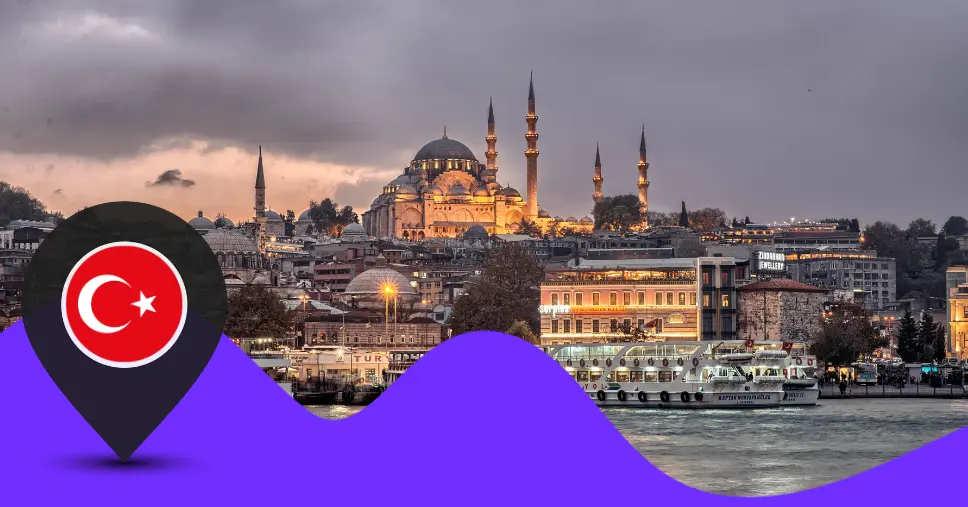
Discover the Rich History and Heritage of Turkey
Turkey’s rich history is a blend of civilisations, empires, and cultures. From the ancient Hittites and Phrygians to the mighty Byzantine and Ottoman empires, Turkey has always been a crossroads. The Ottoman Empire’s reign lasted nearly 600 years, shaping much of the country’s heritage. After World War I, Mustafa Kemal Atatürk transformed Turkey into a modern, secular republic in 1923.
Today, Turkey’s best cities are where ancient history meets modern life. From the ruins of Ephesus to the iconic Hagia Sophia in Istanbul, these cities offer a unique cultural experience. Whether exploring historical sites or diving into the vibrant arts and food scenes, Turkey’s cities beautifully merge the past and present, making every visit unforgettable.
Best Time to Visit Turkey
If you’re looking for the best time to visit Turkey, you need to know that the country offers a wide variety of cultural offerings all year round. So the decision is ultimately up to your preferences.
| Destination | Jan | Feb | Mar | Apr | May | Jun | Jul | Aug | Sep | Oct | Nov | Dec |
|---|---|---|---|---|---|---|---|---|---|---|---|---|
| Alanya | 14°C / 216mm | 14°C / 156mm | 17°C / 101mm | 21°C / 46mm | 25°C / 29mm | 30°C / 9mm | 33°C / 3mm | 33°C / 5mm | 30°C / 11mm | 25°C / 73mm | 20°C / 130mm | 15°C / 246mm |
| Ankara | 4°C / 42mm | 7°C / 36mm | 12°C / 36mm | 17°C / 42mm | 22°C / 52mm | 26°C / 33mm | 30°C / 14mm | 30°C / 11mm | 26°C / 18mm | 20°C / 26mm | 13°C / 30mm | 7°C / 47mm |
| Antalya | 14°C / 216mm | 14°C / 156mm | 17°C / 101mm | 21°C / 46mm | 25°C / 29mm | 30°C / 9mm | 33°C / 3mm | 33°C / 5mm | 30°C / 11mm | 25°C / 73mm | 20°C / 130mm | 15°C / 246mm |
| Bodrum | 14°C / 168mm | 14°C / 117mm | 16°C / 79mm | 20°C / 38mm | 25°C / 23mm | 30°C / 11mm | 33°C / 3mm | 32°C / 7mm | 29°C / 18mm | 24°C / 53mm | 19°C / 94mm | 15°C / 165mm |
| Cappadocia | 3°C / 40mm | 6°C / 34mm | 10°C / 40mm | 16°C / 53mm | 20°C / 54mm | 24°C / 35mm | 28°C / 9mm | 28°C / 9mm | 24°C / 13mm | 18°C / 28mm | 12°C / 35mm | 6°C / 44mm |
| Istanbul | 9°C / 102mm | 9°C / 70mm | 11°C / 69mm | 16°C / 50mm | 21°C / 33mm | 25°C / 30mm | 28°C / 23mm | 28°C / 32mm | 24°C / 46mm | 20°C / 73mm | 15°C / 91mm | 11°C / 123mm |
Sightseeing Season in Turkey
Spring is one of the best times to make your Turkey travel as special as possible. The weather is perfect, ranging from 15–25°C (59–77°F), making the season warm enough for beach visits but also cool enough for hiking. At the same time, there are fewer tourists in spring compared to other seasons. This, in combination with the country’s perfect weather, makes spring an ideal season to do sightseeing in Turkey. During this delightful season, you can also experience some of the most vibrant events and festivals that bring Turkey’s culture to life, like:
- Istanbul’s Tulip Festival
- Cappadocia’s Green Valleys
- Anzac Day in Gallipoli
- Istanbul Film Festival in April
Summer – Ideal for Beach Lovers’ Paradise
If you love the sun, sea, and sand, a summer Turkey trip is ideal for you. The temperatures rise during this time, transforming the country’s coastline into a sun-drenched playground. During the peak season, the general temperatures rise to 28–35°C (82–95°F), which is the perfect hot and dry condition for swimming and sunbathing. The waters, while refreshing, remain pleasantly cool at (24–28°C/75–82°F). Top summer beach destinations for your upcoming Turkey adventure include some of the most stunning coastlines along the Mediterranean and Aegean, where you can enjoy the best of sun, sea, and sand.
- Bodrum with glamorous beach clubs
- Antalya with luxury resorts
- Ölüdeniz for paragliding over the one and only Blue Lagoon (one of the world’s best beaches).
Pleasant Weather & Fewer Crowds in Autumn
As the weather gets a bit cooler, Turkey turns into a heavenly sight of fall colours, making it a relaxing destination for anybody who wishes to connect with Mother Nature. With warm days and cool nights, the temperatures (18-26°C/64-79°F) are perfect for sightseeing and attending cultural events. For example, you can attend the infamous Cappadocia’s balloon festivals in October, where over 500 balloons pepper the crisp morning skies every day, as well as:
- Olive harvest season in Ayvalık and Edremit
- Istanbul Biennial
- Antalya Golden Orange Film Festival
- Whirling Dervish ceremonies in Konya.
Winter – Snowy Landscapes & Ski Resorts
Lastly, if you want to arrange your Turkey travel itineraries for the upcoming winter, you should prepare for the country’s winter wonderland opportunities and seize them when the time comes. The hot air balloons from Cappadocia’s Balloon Festivals are still up in the air, albeit flying over a white carpet of snow. Moreover, Istanbul’s gems (like the Hagia Sophia and the Blue Mosque) look more mystical in the winter. You can also make the most of Turkey’s modern ski resorts, such as:
- Palandöken (Erzurum): 3,125m altitude, Olympic-grade slopes;
- Uludağ (Bursa): Family-friendly with après-ski nightlife;
- Kartepe (Izmit): Best for weekend getaways from Istanbul.
Most Beautiful Places to Visit in Turkey
So far, in this Turkey travel guide, we’ve teased you with some of the most beautiful places in Turkey you can visit every season. Now, it’s time to dive more into all these areas so that you can leave enough time for each destination.
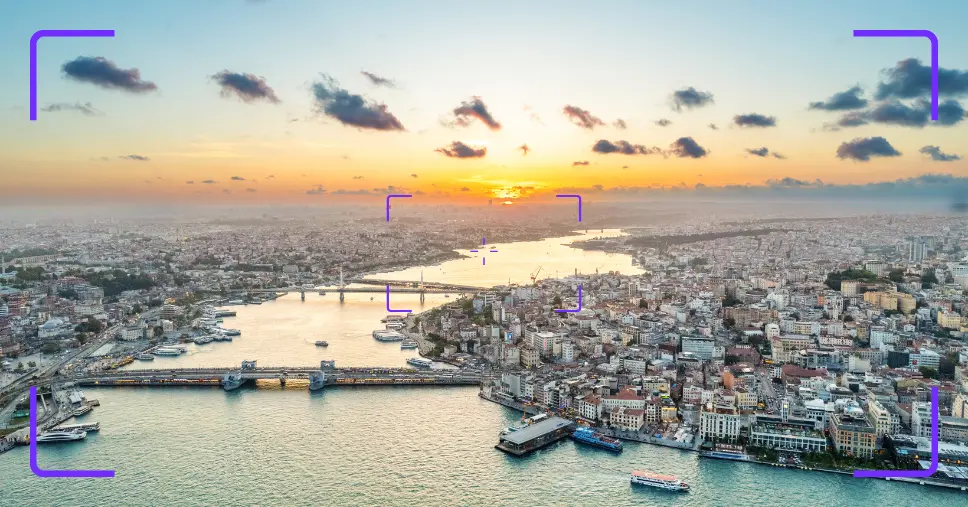
Istanbul – The Gateway Between East and West
According to the well-known Turkey travel book “Lonely Planet Turkey”:
“Istanbul doesn’t just bridge continents, it connects centuries. One moment you’re sipping çay in a Byzantine shadow, the next, you’re dodging scooters in a neon-lit alley smelling of simit and shisha.” This vibrant city blends the old and new, where ancient Ottoman culture meets modern life. Stroll through historical landmarks like the Hagia Sophia, Blue Mosque, and Topkapi Palace, or dive into the bustling energy of the Grand Bazaar, founded in 1461. Whether you’re sipping çay in a centuries-old café or exploring neon-lit streets filled with the scent of simit and shisha, browsing an Istanbul travel guide can offer added context and inspiration to fully appreciate all that this remarkable city has to offer.
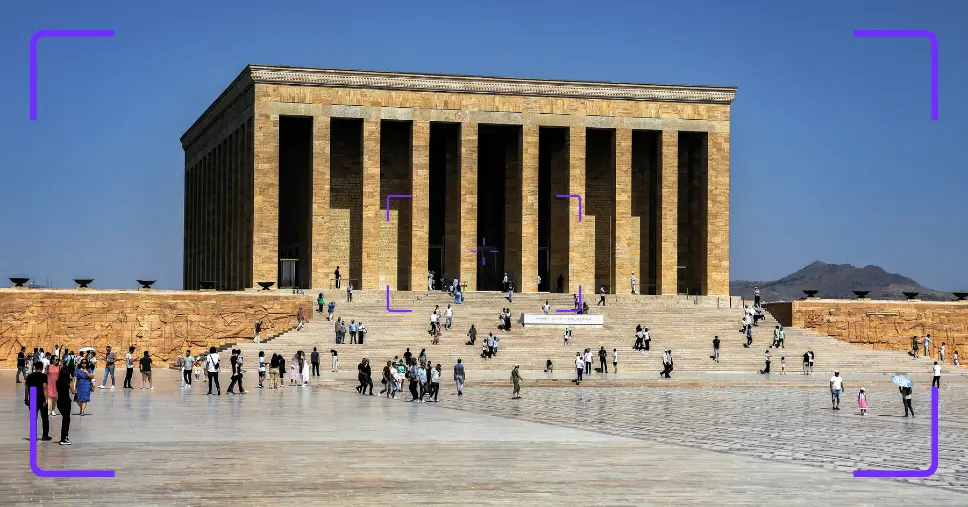
Ankara: The Political and Cultural Capital
Ankara is the heart of Turkey, blending modern political significance with ancient Anatolian roots. Iconic landmarks like Anıtkabir, Atatürk’s monumental mausoleum, and the impressive Kocatepe Mosque are must-sees, each offering a unique experience. For a deeper dive into Turkey’s rich history, visit the Hamamönü district, where Ottoman sultans’ houses are now artisan workshops. The Ethnology Museum is another gem, perfect for those looking to explore Turkey’s cultural heritage. To uncover even more of the city’s layers, an Ankara travel guide can be a helpful companion for navigating both its iconic and lesser-known spots.
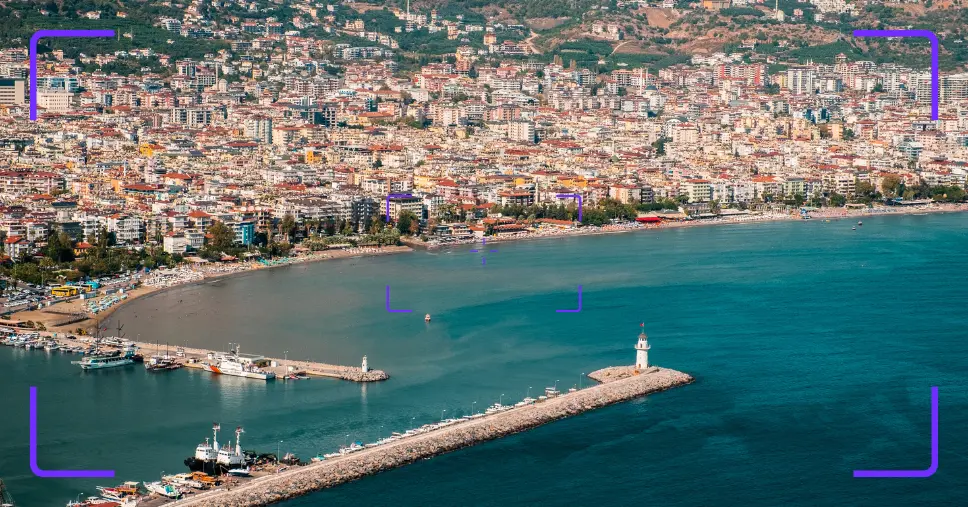
Alanya: A Blend of History and Paradise
This coastal gem is known for its beautiful beaches, crystal-clear waters, and rich history. Key landmarks include Alanya Castle, perched on a hill offering panoramic Mediterranean views, and the Red Tower, dating back to the 13th century. Don’t miss Cleopatra Beach with its golden sands and the legendary visit by Cleopatra herself. The Damlataş Cave and Syedra, the ancient Roman city nearby, are also must-sees. To make the most of your visit, browsing an Alanya travel guide can offer helpful insights into both the well-known highlights and the quieter, hidden corners of the region.
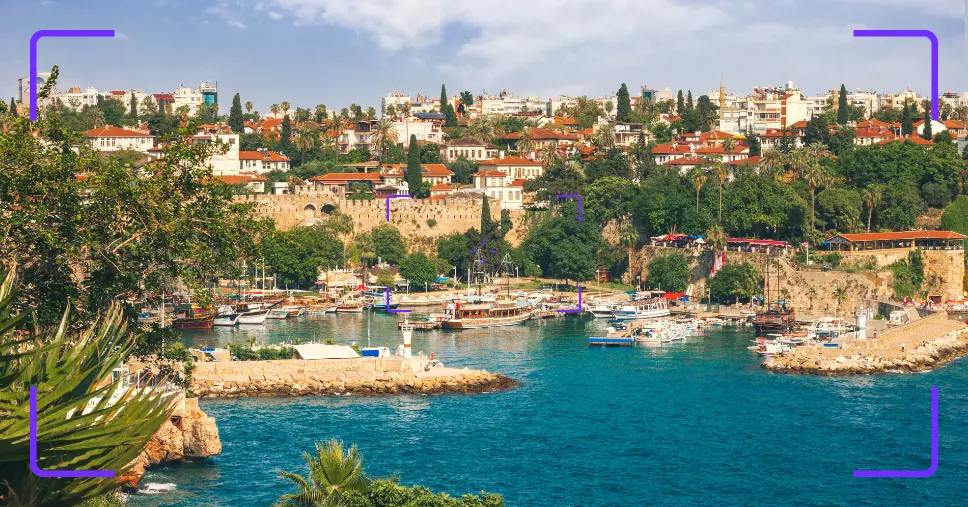
Antalya: Turkey’s Mediterranean Gem
Antalya is renowned for its luxurious resorts, crystal-clear turquoise waters, and historical significance. As a gateway to Turkey’s Mediterranean coast, it blends the beauty of nature with rich cultural heritage. While exploring the city, don’t miss the opportunity to visit iconic spots like the Old Town (Kaleiçi), where the remnants of the Ottoman and Roman empires are beautifully preserved. For those wanting to go beyond the surface, an Antalya travel guide can offer deeper context and helpful tips to fully experience the city’s charm.
Other spots to visit in Antalya:
- Düden Waterfalls
- Aspendos, Perge and Termessos (ancient cities less than 1 hour away from Antalya).

Cappadocia: Fairytale Land of Hot Air Balloons
We’ve already talked about Cappadocia’s mesmerising hot air balloon festival, but this region offers so much more. Known for its UNESCO-listed fairy chimneys, Cappadocia is home to underground cities that go as deep as 8 levels. The cave hotels, carved into soft tufa rock, offer a unique stay you won’t find anywhere else. Outdoor lovers will enjoy hiking through Pigeon Valley or Love Valley, both offering breathtaking views of the surreal landscape. Don’t miss the Göreme Open-Air Museum, where rock-cut churches tell the story of the region’s rich history. To get the most out of your visit, a well-curated Cappadocia travel guide can help uncover both the iconic highlights and hidden wonders that make this place truly unforgettable.

Bodrum: The Ultimate Beach Destination
Bodrum is Turkey’s nightlife capital, offering a lively mix of day-to-night fun. Spend your days at Bitez Beach, windsurfing and enjoying seafood, then dance the night away at Halikarnas, Europe’s largest open-air club. Beyond the nightlife, explore Sedir Island’s Cleopatra Beach and the historic Bodrum Castle with its Underwater Archaeology Museum. Whether you’re here for the history, the sea, or the after-dark energy, turning to a Bodrum travel guide can help you uncover the town’s best spots and hidden gems. Along with Izmir, Bodrum makes for the perfect starting point for an unforgettable road trip along Turkey’s west coast.

Konya: The City of Whirling Dervishes
Konya, the birthplace of Rumi and Sufi mysticism, is considered Turkey’s spiritual capital. The city still honours ancient traditions, with the Whirling Dervishes and Sema dances taking place on Thursday evenings, embodying the spirit of Konya. Don’t miss the Mevlana Museum, home to Rumi’s tomb and sacred relics, or Alaaddin Hill, where Seljuk-era mosques offer stunning views of the city. While you are sightseeing, don’t forget to explore our affordable data plans for travellers in Turkey, ensuring you’re always connected.
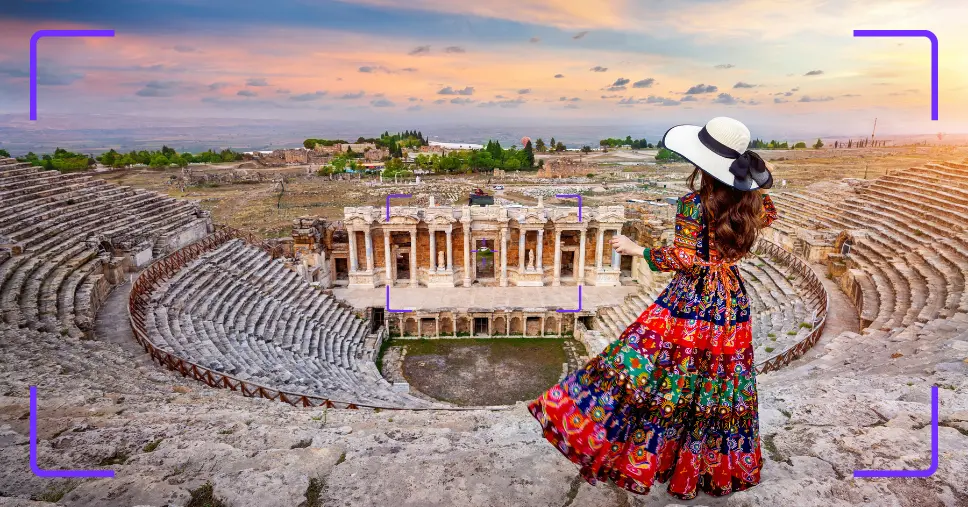
Top Places and National Landmarks to Visit in Turkey
Turkey is a country rich in history, natural beauty, and fascinating facts. One of the many interesting facts about Turkey is that it has more than 13,000 kilometres of coastline, and it is home to one of the world’s oldest known temples, Göbekli Tepe. Located at the crossroads of Europe and Asia, Turkey offers a blend of diverse landscapes, ancient cities, and cultural treasures. So, to wrap things up, here’s a list of the top 5 places to visit in Turkey that’ll make your trip unforgettable:
- Hagia Sophia & Blue Mosque: Istanbul’s iconic duo, where you get to enjoy both Byzantine grandeur and Ottoman tilework.
- Ephesus: Walk Roman streets past the Library of Celsus, where Mark Antony once wooed Cleopatra.
- Pamukkale: Bathe in steaming turquoise pools on calcium-white terraces formed over millennia.
- Cappadocia’s Fairy Chimneys: Surreal volcanic spires hiding ancient cave homes and churches.
- Mount Nemrut: Giant stone heads guard this 2,150m summit built by a megalomaniac king.

Turkish Cuisine Guide: What to Eat & Drink
If there’s one thing you should know about travelling to Turkey, it is that you’ll have a very delicious trip ahead of you. The country is known for blending rich flavours, fresh ingredients, and centuries of tradition. So, no matter if you’re feeling savoury or sweet, there’s always a Turkish delight waiting for you.
- Adana kebab: Spicy minced lamb grilled on skewers.
- Meze: Small plates like hummus, haydari (yoghurt dip), and dolma (stuffed veggies).
- Baklava: Layers of filo, nuts, and syrup.
- Manti: Tiny beef dumplings topped with garlic yoghurt.
- Testi kebab: Meat stew cooked in a clay pot (broken open at your table).
As for the drinks, there are two go-to options in front of you. You can either go with traditional Turkish tea (Çay), which is served in the iconic tulip glasses, or you can choose Turkish coffee, which is rich, thick, and strong. There’s also a bonus point: You can use the remaining coffee grounds at the bottom of your cup for fortune-telling adventures.
Shopping in Turkey: What to Buy & Where
While Turkey has its share of modern malls and department stores, its traditional shopping scene is where the real treasures lie. Explore the bustling Grand and Arasta Bazaars in Istanbul or the charming Kaleiçi boutiques in Antalya for unique, hand-crafted items. Iconic souvenirs include Turkish carpets (like “Hereke” silk or “Oushak” wool), Iznik-style ceramics, and Nazar Boncuğu (evil eye charms for protection). For something edible, pick up Turkish delights, olive oil, and spices from the Egyptian Bazaar to take a piece of Turkey home with you. Turkey has a lot to offer, but nowadays it can be quite expensive to buy clothes, so knowing what to pack for Turkey can help you not to overspend.
Accommodation and Activities Guide
When planning your trip to Turkey, book your accommodation early to secure the best deals. Before reserving, check Turkey’s visa requirements to ensure everything’s in order. Once that’s done, focus on the details that will make your trip smoother.
This table will help you choose the best accommodation based on your preferences.
| Best Hotels in Turkey for Luxury Stays | Budget Hotels & Hostels for Backpackers | Unique Stays: Cave Hotels in Cappadocia |
|---|---|---|
| Çırağan Palace Kempinski (Istanbul) | Cheers Hostel (Istanbul) | Museum Hotel |
| Argos in Cappadocia | Köşk Hostel (Antalya) | Sultan Cave Suites |
| D Maris Bay (Marmaris) | Cappadocia Cave Hostel | Kelebek Special Cave Hotel |
| Rixos Premium Göcek | Izmir Hostel | The Koza Cave Hotel |
If you’re the active type who cannot stand the idea of even a short day trip without some physical fun, do not worry. Our comprehensive table of activities has also compiled a list of adventures to keep you entertained and active.
| Best Hiking Trails in Turkey | Scuba Diving & Snorkelling in the Mediterranean | Winter Sports in Turkey: Skiing in Uludağ | Camping & Glamping in Turkey’s National Parks |
|---|---|---|---|
| Lycian Way: 540 km coastal path with ancient ruins & turquoise coves | Kas: Sunken ruins & underwater caves | Uludağ (Bursa): Best for families & nightlife | Göreme: Cave tents under Cappadocia’s stars |
| Cappadocia’s Valleys: Surreal rock formations & hidden churches | Bodrum: WWII wreck dives & vibrant reefs | Palandöken (Erzurum): Steep slopes for experts | Olympos: Treehouses near ancient Lycian ruins |
| Kaçkar Mountains: Alpine lakes & Georgian-era stone bridges | Ölüdeniz: Crystal-clear lagoon perfect for beginners | Saklıkent (Antalya): Skiing with sea views | Alaçatı: Luxury yurts with Aegean breezes |
Turkey Apps – Stay Connected and Organised During Your Journey
Downloading a few essential Turkey apps can make your travel smoother. Here are some top picks for staying connected while you’re in Turkey:
- BiTaksi: Call taxis and track their arrival in major cities.
- Esimatic: Stay connected with Esimatic eSIM all across Turkey.
- GetYourGuide: Book tours and activities across Turkey.
- Moovit: Navigate public transport with bus, train, and metro schedules.
- Yemeksepeti: If you’re craving delicious Turkish food, this app allows you to order food from local restaurants and have it delivered to your doorstep.
- E-Devlet (e-Government Portal): Access government services and personal records for long-term stays.
For uninterrupted service, consider using an eSIM, which helps you stay connected in Turkey without needing a physical SIM card. Make sure to stay organised, have cash for local transactions, and respect local customs for a smooth trip.
FAQ
Most visitors need an e-visa (apply online before travel). For example, US/UK citizens can get 90-day visas. It’s best to always check official requirements to inform yourself of visa costs and rules.
Domestic airlines offer flights to connect major cities quickly. Buses are cheap and comfortable. For flexibility, you can rent a car for both city rides and road trips in Turkey.
Turkey uses the Turkish Lira (₺). ATMs are everywhere, but small shops prefer cash. Credit cards work in cities, though rural areas may not accept them.
Budget travellers can manage $50/day, mid-range $100-150/day, while luxury stays start at $250+/day. Street food saves money, but guided tours and hot air balloons add cost.
Visit Ephesus’ ruins, Istanbul’s historical gems, Cappadocia’s fairy chimneys, Pamukkale’s thermal pools, Antalya’s beaches, and Bodrum’s nightlife and adjacent towns. Don’t miss Mount Nemrut’s sunrise or Butterfly Valley’s secluded beauty.

Download Esimatic eSIM and Save on Roaming Fees!
Unlock seamless mobile data access with Esimatic and cut down on expensive roaming costs during your travels.